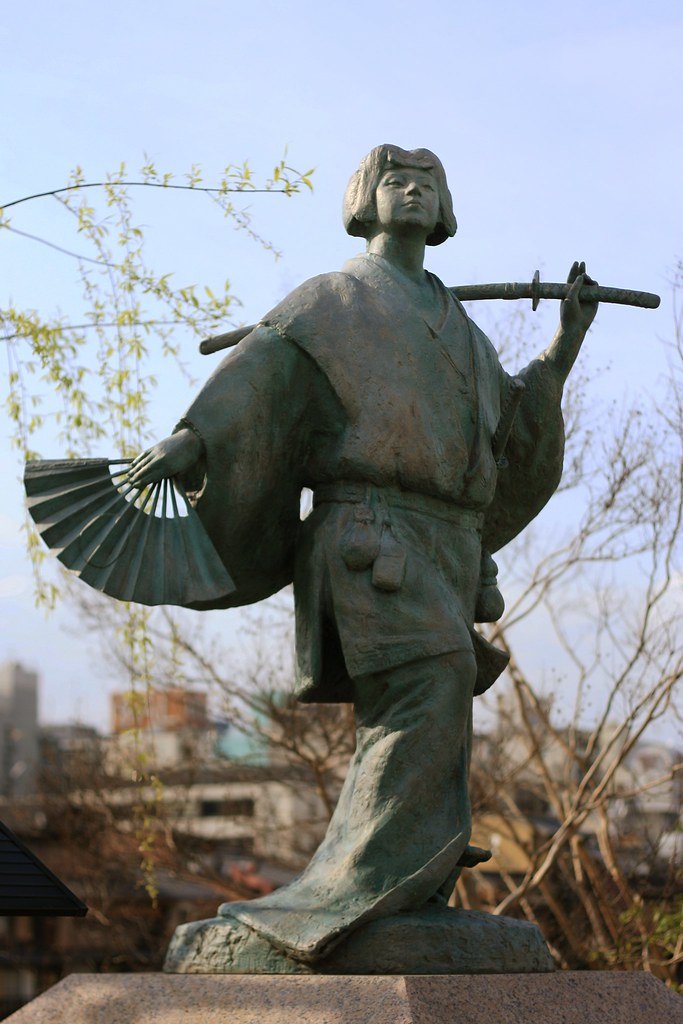The History of Kabuki
This article was written by SJA youth board member Kamryn Sauri.
Have you ever seen a Japanese theater performance? The pale white skin, with wild red or blue lines painted across the face, all dressed in traditional robes? That art-form is called kabuki. The word kabuki, written 歌舞伎 in Japanese, is derived from the word kabuku, meaning bizarre. The reason this name came to be is a very interesting story. In the early 17th century, a shrine maiden named Izumo no Okuni would perform strange dances, parodying popular Buddhist rituals. This style of dancing would become very popular in Kyoto and soon spread to other regions of Japan, moving from region to region via word of mouth. Kabuki was widely regarded as the “theater of the people” because its daring subject matter conflicted with the conservative ideals of the leaders at the time.
This separated kabuki from the other major stage art of the time, noh. Noh was originally a Shinto ritual that combined prayer, dance, and music, but during the Muromachi period, the shogun took a liking to it, and it became a very noble art. After the Civil War, during the Edo period, noh was further raised to become a kind of general education for samurai. Noh was originally only performed by men, as opposed to its more casual counterpart, kabuki.
Over the years, kabuki theater would have many restrictions placed on it. The conservative Tokugawa shogunate of the Edo period allowed only older men to perform, because the shows were becoming more risqué and correlated with okiya, or geisha houses. As time went on, kabuki went from short, spontaneous dances to elaborate five-act plays.
With a much longer history and more affluent clientele, noh is regarded as the more sophisticated of the two art forms. At its core, it is focused on martial arts, with less emphasis on storytelling. On the other hand, kabuki tells the story of people similar to its audience, with romance and drama similar to modern stories we see in today’s media. This has much to do with Japan’s isolation, and World War II.
After Japan broke its isolation, kabuki underwent many changes to keep up with the modern world, where noh became almost extinct. American soldiers stationed in Japan had access to kabuki and brought it across the seas. It continues to spread its influence, showing up in today’s American musical theater as well as in television and art. Some examples of this include Pacific Overtures, Stephen Sondhiem’s musical about Commodore Perry’s invasion of Japan, and forced modernization.
While noh is gradually making its way back to popularity through mass preservation efforts, kabuki has already made its mark on the rest of the world, showing off Japan’s beautifully rich culture.



